Scottish economic bulletin: April 2024
Provides a summary of latest key economic statistics, forecasts and analysis on the Scottish economy.
Business Conditions
Business activity has strengthened at the start of the year, however investment intentions remain subdued.
Business Activity
- The Purchasing Managers Index (PMI) business survey indicates that business activity in Scotland’s private sector has strengthened at the start of the year and increased for the second consecutive month in February (52.1). There was partly underpinned by an increase in new orders for the first time in eight months (51.7), however this was driven by growth in the services sector while manufacturing activity continued to weaken, though to a lesser extent than in recent months.[4]

- Reflecting the pick-up in activity, business optimism for the year ahead rose to an 11-month high, with reports indicating hopes of improved economic conditions underpinning expectations.
Business Concerns
- Reporting of key business concerns have continued to converge through the first quarter of the year as inflationary pressures have eased and increased expectations for improved trading conditions for the year ahead have emerged.
- The Business Insights and Conditions Survey (BICS) for April indicates that businesses concerns around energy prices (12.2%) and inflation of goods and services (10.5%) have stabilised in recent months following their downward trend over 2023 and have converged with wider concerns of falling demand (12.5%) and competition with other UK businesses (9.1%).[5]
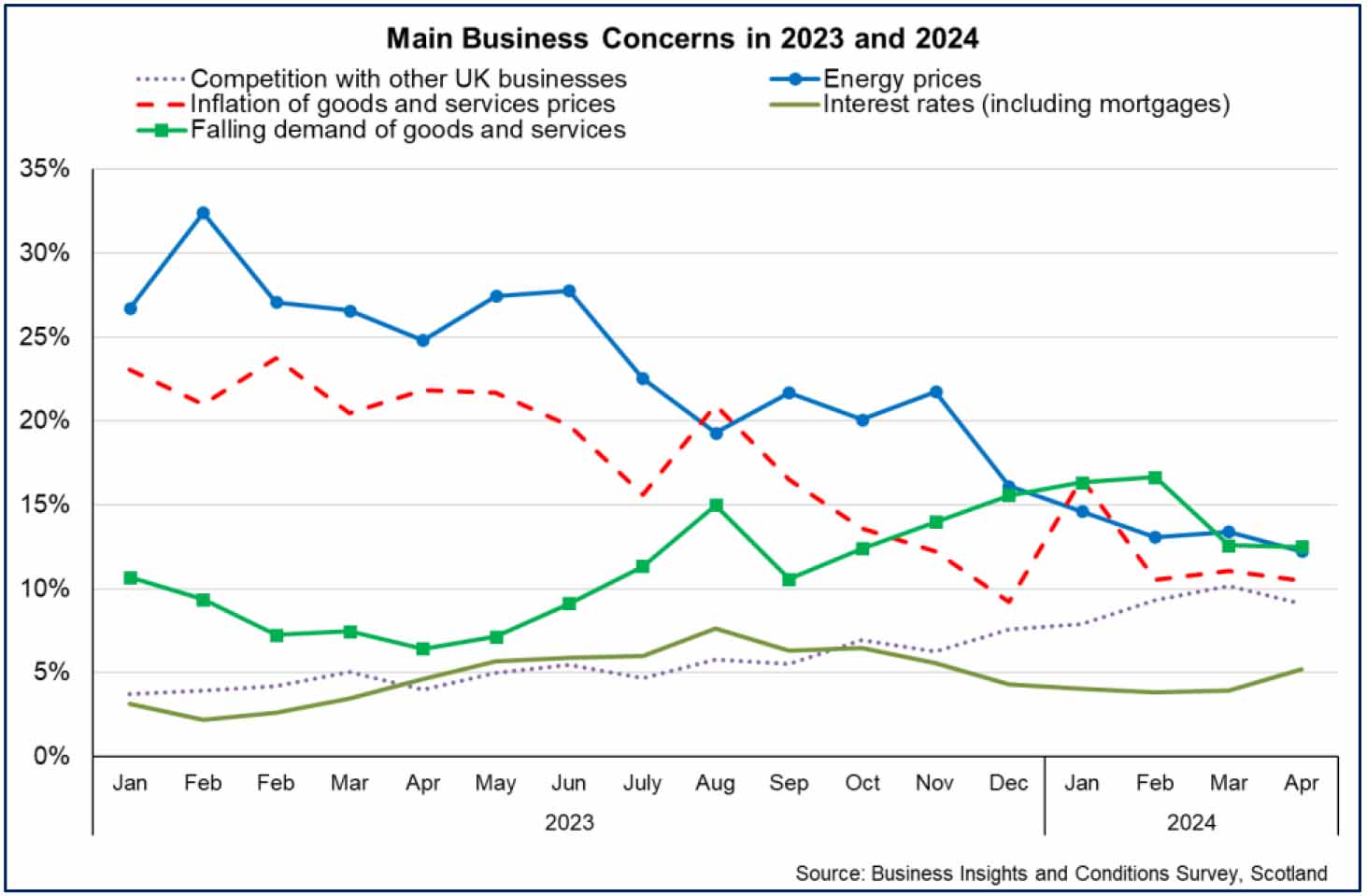
- The fall in the share of businesses reporting falling demand of goods and services in recent months potentially reflects the improvement in business activity at the start of the year. Concerns regarding interest rates eased over the second half of 2023 likely reflecting increased expectations that interest rates may fall during the coming year and have broadly stabilised at the start of 2024, increasing slightly over the recent month to 5.2%.
Business Costs
- At a headline level, producer input prices continued to decline in February on an annual basis for a ninth consecutive month, which is feeding through to significantly lower rates of output price inflation. The input price index fell 2.7% on an annual basis in February, while producer output prices rose 0.4%. [6]
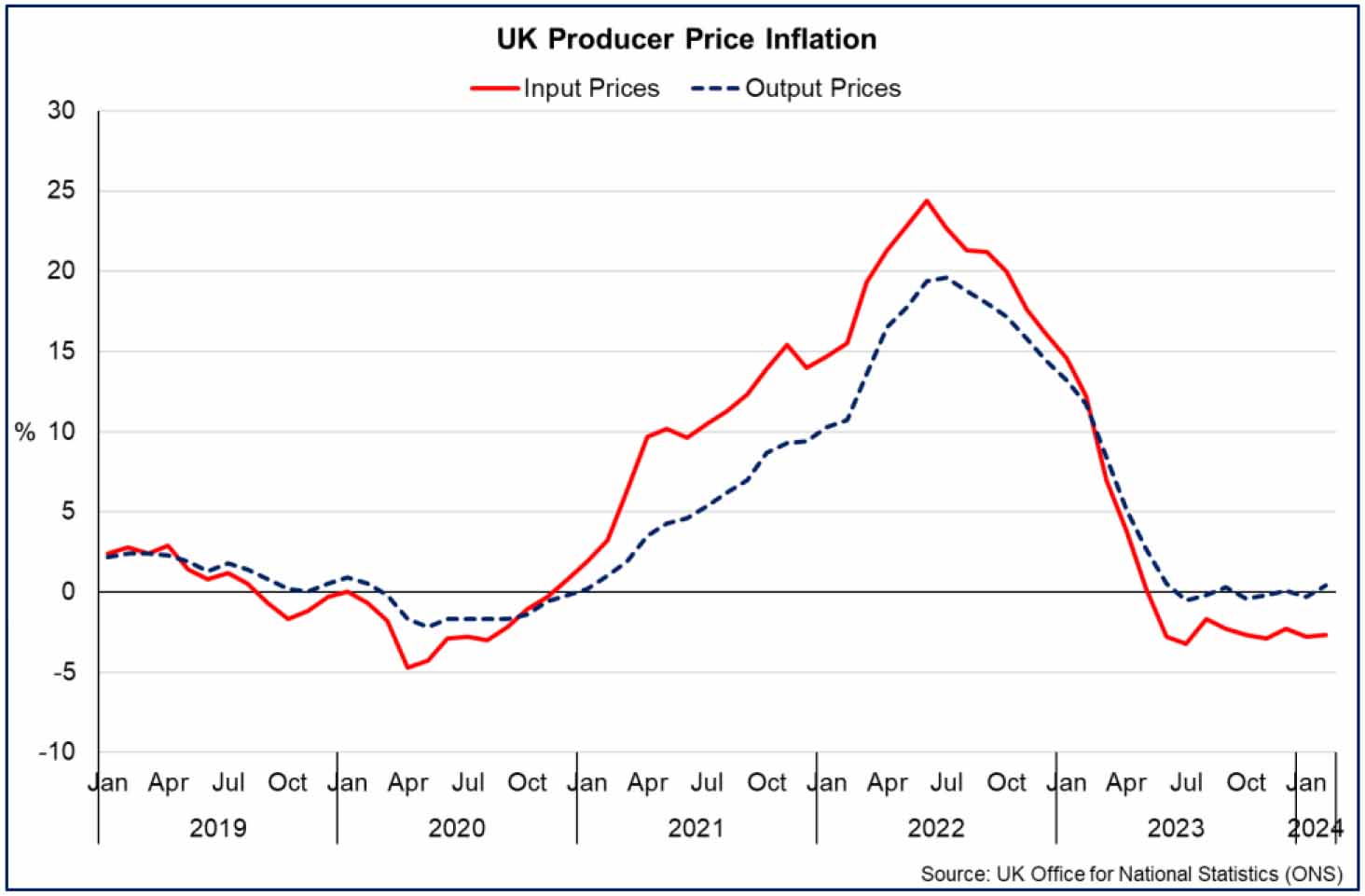
- Overall, input and output price levels have been relatively more stable since June 2023, albeit they are significantly higher than at the start of 2021 (c. +25%) prior to the spike in inflation.
- The largest downward contributions to the annual input inflation rate for producers in February came from inputs of chemicals (-7.4%, up from -8.4%) and other parts and equipment (0.1%, down from 0.6%). Domestic food input prices have also continued to fall on an annual basis (-2.4%), however imported food input price inflation has remained positive (0.5%, down from 4.3%), alongside fuel inputs (6.1%, down from 10.5%).
- Looking at a broader range of input costs across the manufacturing and services sectors, PMI business survey data indicates that input prices continued to rise in February, however the pace of input cost inflation in recent months has returned to around its lowest rates since the start of 2021.
- In terms of the feed through to output prices, BICS data show that many businesses are not considering raising prices in April (31.1%). However, it also provides insights on which costs remain the most challenging to absorb, with the main factor of considered price rises being labour costs (42.3%), followed by energy prices (23.9%) and raw material prices (23.7%).
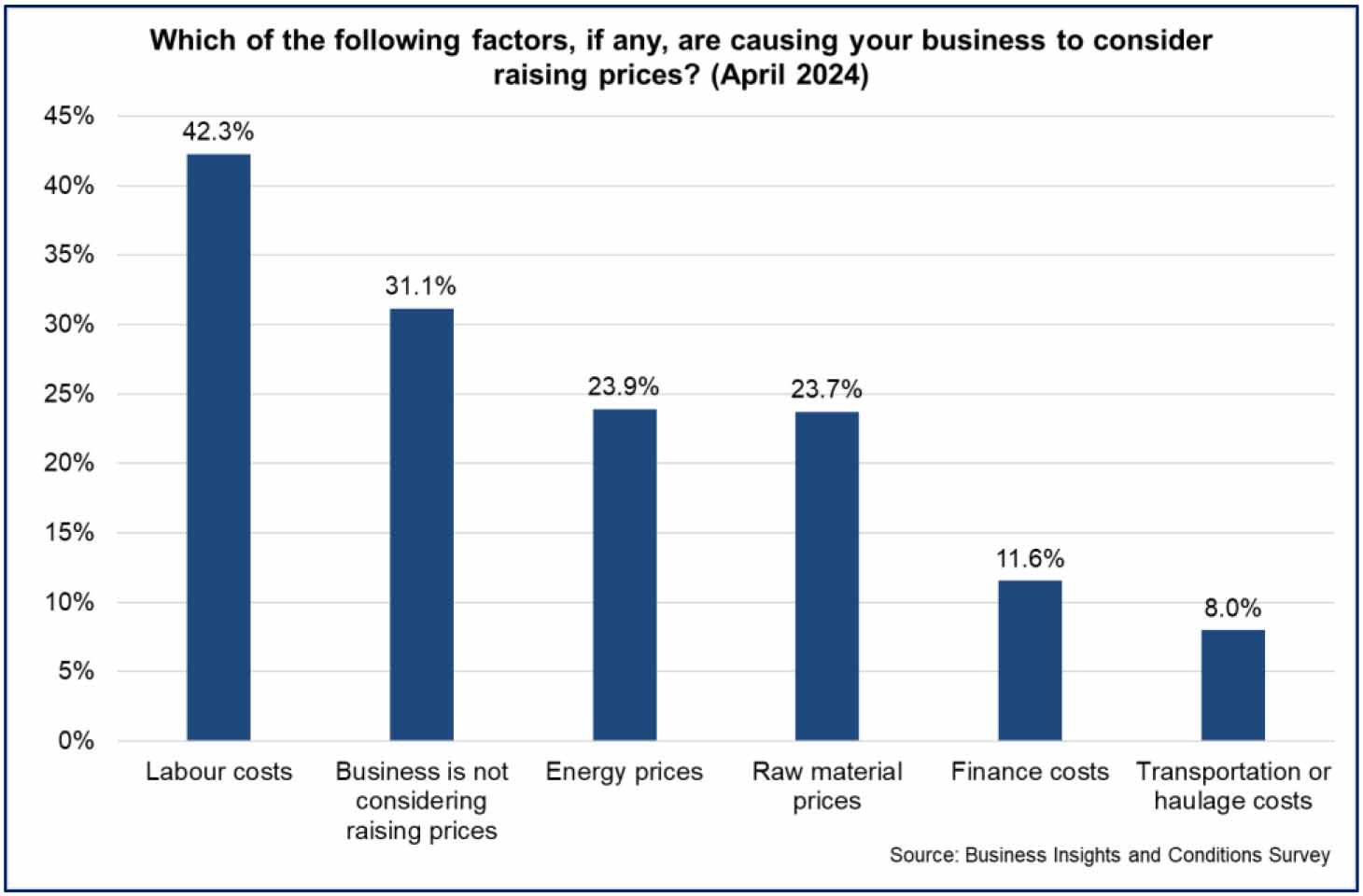
- Over March and April, around 8% of businesses reported that transportation or haulage costs are causing business to consider raising prices. This potentially partially reflects the increase in shipping and supply chain costs and delivery times that businesses are facing due to the attacks on commercial shipping in the Red Sea and the rerouting of shipping routes from Asia to Europe round the Cape of Good Hope rather than through the Suez Canal.
- There remains uncertainty over the persistence and impacts of the current supply chain disruption. BICS data show that only 5.1% of businesses in February experienced global supply chain disruption, remaining below the average for the past year (7.5%), however this is higher in the manufacturing sector (11.1%), which is particularly exposed to this disruption.
Business Investment
- The combination of business concerns around demand, cost pressures and higher interest rates continues to weigh on business investment decision making.
- BICS data for January show that capital expenditure expectations have moderated over the past year with 15% of respondents expecting their capital expenditure to increase over the next three months (down from 21.3% in January 2023) while an increasing share of businesses expect their capital expenditure to stay the same (37.2% up from 33.3%). Furthermore, of those expecting to authorise capital expenditure, 43% report that it will be for replacements, with lower shares reporting to authorise capital expenditure to increase efficiency (14%), expand capacity (13%) or to use new technology (11%).
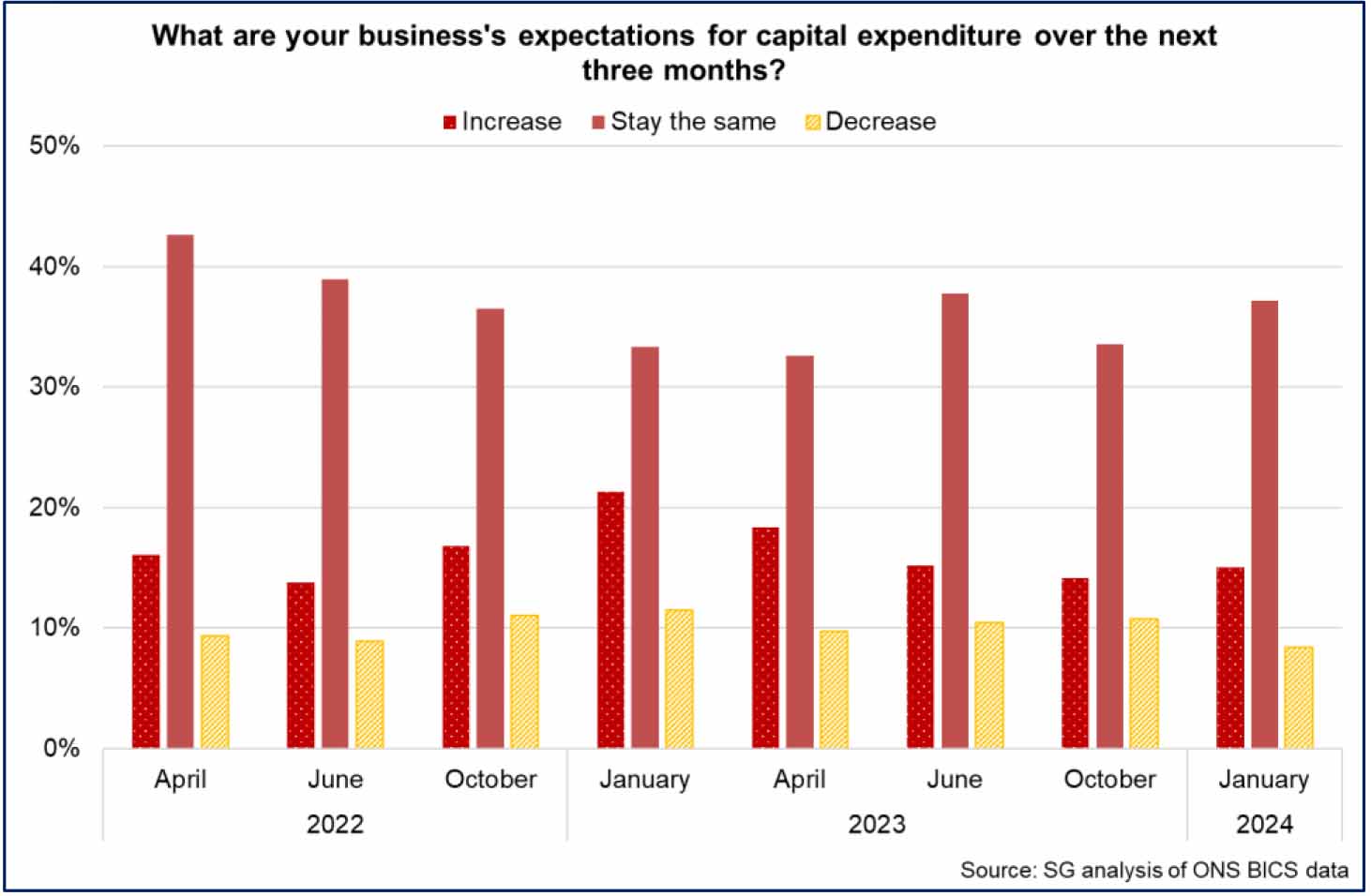
- The Scottish Chambers of Commerce Quarterly Economic Indicator for the first quarter of 2024 also indicates a level of caution reporting that business investment trends remaining largely frozen. Over half of businesses (53%) reported no change to total investment and 52% no change to training investment.[7]
Business Optimism
- Despite the challenging conditions continuing to face businesses, the recent pick-up in business activity and easing of some cost inflation pressures has been reflected in a further improvement in business optimism.
- The PMI business survey data indicates that business optimism for the year ahead rose to an 11-month high in February, continuing its upward trend since the middle of 2023 amid business hopes of improved economic conditions.
- BICS data for March indicates that most businesses expect their overall business performance to stay the same (41.6%) or increase (37.3%) over the coming year. On aggregate, this has remained broadly stable compared to the start of 2023, while the share of businesses expecting their performance to decrease has fallen to 5.6%.
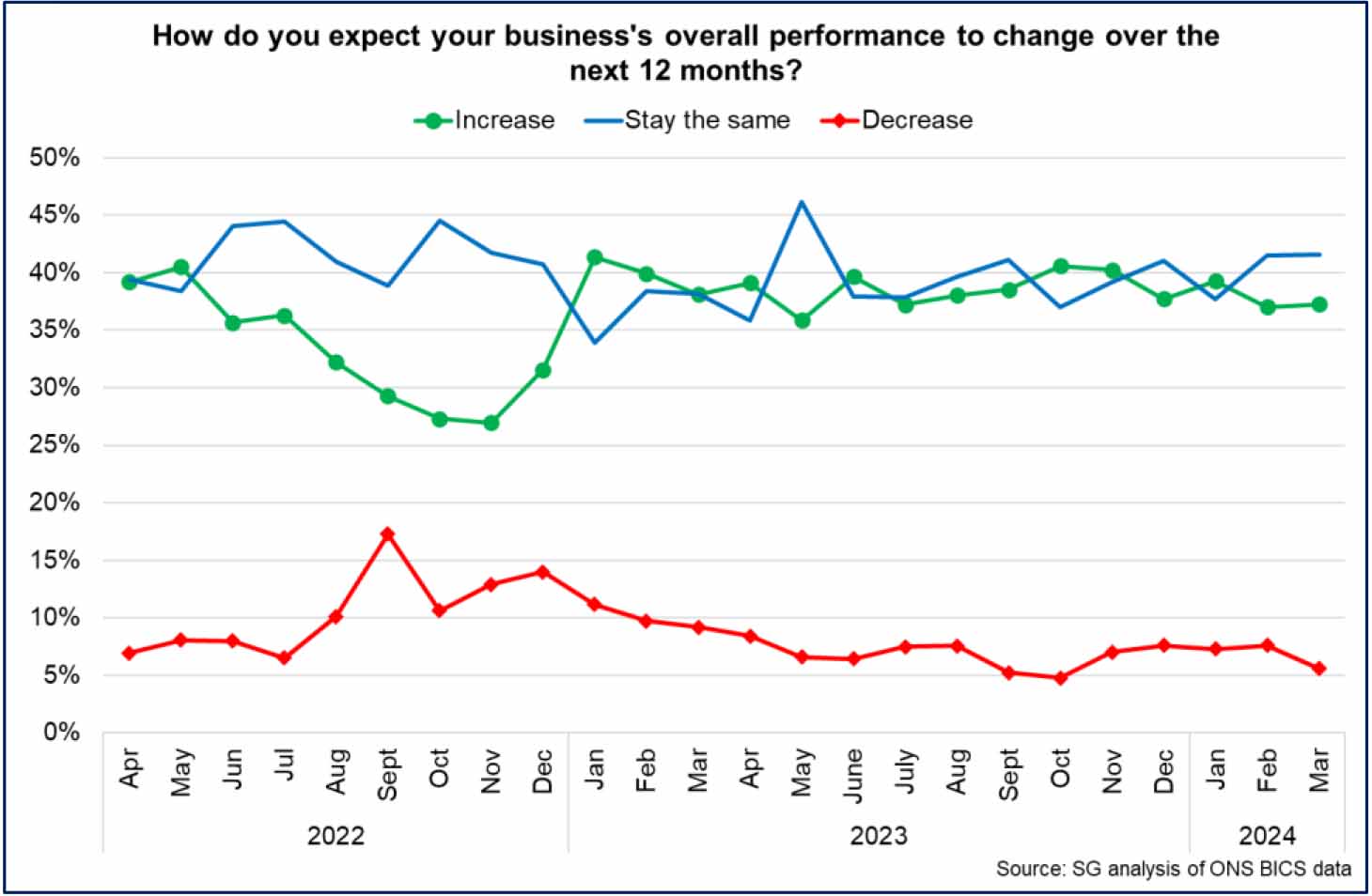
Contact
Email: OCEABusiness@gov.scot
There is a problem
Thanks for your feedback